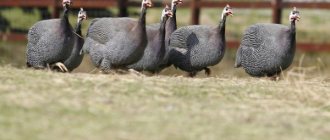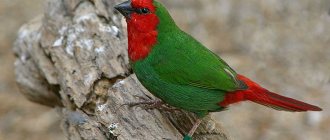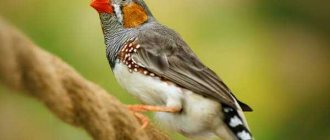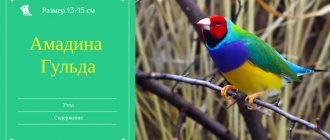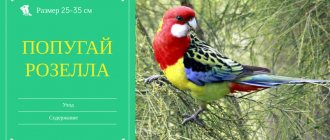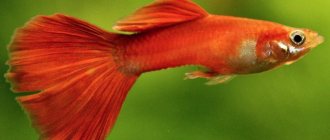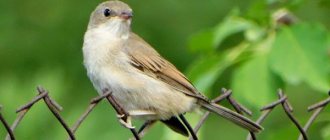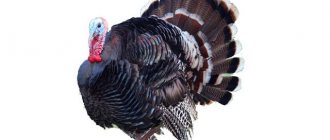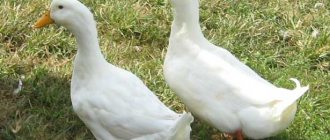Breeding canaries in captivity is an interesting activity that allows the owner to discover new behavioral features of his pets and see all stages of bird reproduction at home. However, to obtain offspring, it is not enough to simply purchase birds of different sexes. Producers need to create certain conditions in which they will begin to reproduce. A novice canary breeder must strictly follow the recommendations for breeding canaries in order to ultimately obtain healthy offspring.
Matching
To successfully breed canaries and produce healthy offspring, it is necessary to choose the right parental pair. Manufacturers must be at least 10 months and no more than 4 years old. It is advisable to select a male and female of approximately the same age; such a pair has a better chance of breeding healthy, viable chicks.
Future parents must have a neat appearance without signs of illness. The plumage should be bright, shiny and well-groomed. Birds must be active and have a good appetite. Congenital defects can be inherited by offspring, so the participation of such individuals in breeding should be discarded. In addition, inbreeding should be avoided.
Obesity inhibits the sexual function of animals; This is especially true for males. Therefore, when preparing birds for the mating season, it is necessary to transplant them into spacious enclosures, and also regularly allow them to fly around the apartment. Exercise and dietary adjustments will get your birds in good shape.
Which birds should you avoid?
Starting a family is a responsible matter. Therefore, it is important to choose the most suitable pair. The choice of future parents should be especially careful. Sick, weak individuals with poor appetite and sloppy appearance are clearly not suitable.
It is also worth paying special attention to the condition of the plumage. It shouldn't be, the appearance of bald patches is also clearly a bad sign. Such violations indicate the presence of health problems. Such a bird obviously won’t make a parent.
The psychological state also plays a role. The bird should not behave too violently or, on the contrary, quietly. There must be a golden mean. Otherwise, she simply will not be able to fully plant the eggs.
Any external flaws can be passed on by inheritance. Therefore, to avoid this, you should immediately cancel such a candidacy for the role of parents.
Diet
Reproduction of canaries at home is impossible without proper feeding of the breeders. Feed must contain all necessary nutrients, vitamins, micro- and macroelements. The diet of canaries during preparation for the mating season should include the following components:
- a mixture of grains and seeds;
- fruits;
- vegetables;
- greenery;
- rice or millet porridge;
- boiled egg;
- cottage cheese;
- insects;
- honey (2-3 drops per day).
Canaries must be fed sprouted seeds of sunflower, millet, wheat, barley and rapeseed. They are rich in vitamin E, which has a beneficial effect on reproductive function. The diet is enriched with vitamin and mineral supplements. In winter, you can use fish oil in small quantities. To form egg shells, females need calcium, so birds should always have access to calcium sources: ground eggshells, sepia, feed chalk or ready-made mineral stones that can be purchased at a pet store.
Soft food
In addition to natural foods, similar to those that canaries consume in nature, you can also use various mixtures of products of plant and animal origin. However, such food is often unfamiliar to birds. Therefore, at first they do not take them or eat them reluctantly, but when they get used to them, they eat them willingly. These feeds are supplemental and are given in smaller quantities than the grain mixture.
Soft food usually turns sour quickly, so they are prepared for only one day. They should be fed from a separate feeder and never mixed with the grain mixture. The remaining soft food should be thrown away at the end of the day to prevent the canaries from developing gastrointestinal diseases. From soft food, canaries are given cottage cheese, a hard-boiled and finely chopped chicken egg, white bread soaked in milk or sweet tea, as well as a carrot-sugar mixture with various additives, for example, cottage cheese or chopped chicken eggs.
The carrot-sugar mixture is prepared from white crackers and juicy carrots, grated, mixing them in approximately equal proportions. The resulting mixture should be crumbly, but not dry; after receiving it, other components are added to the mixture. This food should be prepared immediately before feeding the canaries.
Nest preparation
For a pair of canaries, prepare a separate cage measuring 50x40x40 cm (LxWxH). It should have 2 doors: a drinker and a feeder are installed through one, and a nesting base is hung on the other. The nesting base can be open or closed. Most female canaries prefer open, bowl-shaped nests. The bowl should have a diameter of about 10 cm and a depth of about 5-6 cm.
You can buy a nesting base at a pet store or make it yourself. To make it you will need a round base, cling film, thick rope and glue. The base is wrapped in cling film and a rope is wound onto it in the form of a spiral, coating the turns with glue. The finished nest is removed from the base, the film is removed and placed in the cage after the glue has completely dried.
Artificial feeding of canary chicks
Some female canaries may not feed their chicks often enough. In this case, they sometimes need to be fed to a person. In this case, care should be taken, since in the first days of life the chick does not produce the required amount of enzymes that are needed for digestion. For feeding, a special mixture for chicks is suitable, which can be bought at a pet store. Or you can use a dairy-free formula for babies, adding a little pureed yolk.
The chicks are separated from their parents at the age of 28-30 days. For the first two weeks after separation, they live in a small ordinary cage. During this time, they get used to all types of food and become physically strong. After this, they can be transferred to a flying cage.
Maintenance of adult canaries after breeding is complete
Canaries usually make 3-4 clutches per year. But it is better not to allow many clutches, since the birds simply do not have enough health and strength to raise all the chicks healthy.
For canaries, the breeding season ends by early August. Then the time comes for the birds to undergo their annual molt. After the females have nested, they are released into an aviary or into a flight cage. The male returns to his single cage. He becomes calm and stops singing. During the molting period, males can be allowed into flying cages. They can also be left in nesting cages (several in one).
Nesting
You can tell that canaries are ready to reproduce by changing their behavior. The birds become restless, rush around the cage, flap their wings, and scream. Kenar begins to sing loudly, briefly and monotonously. The female tries to build a nest, collects blades of grass, feathers, pieces of paper and cotton wool and rushes around the cage, holding them in her beak. A bald patch appears on her stomach - a “brood spot.” When these signs appear, the couple is transplanted into a prepared cage with a nesting base.
Mating games
After landing, the male begins to chase the female and feed her, and she opens her beak and crouches in front of him. The kenar sings, swinging on its perch and stepping from paw to paw, and then rushes at the female. The canary responds to the canary's song with a squeak and runs away from him. The signal for mating is the inviting pose of the female.
Nest construction
A few days after mating with the male, the female begins to build a nest. At this time, it is necessary to place materials in the cage that she can use: scraps of fabric, feathers, threads, cotton wool, scraps of paper, dry grass or hay. They are placed on the bottom or pushed between the rods. The procedure takes a female from 3 days to a week. The male rarely participates in the construction of the nest, limiting himself to feeding his partner.
Laying and incubating eggs
2 days after completing the construction of the nest, the canary begins laying eggs. She lays 1 egg per day; in total there are from 4 to 7 eggs in the clutch. Incubation begins when the number of eggs reaches 2-3 pieces. In this regard, the chicks do not hatch simultaneously, but within 2-3 days.
The last to hatch chicks may receive less food and be stunted as the mother prefers to feed the larger, more active firstborns. To ensure that the chicks hatch simultaneously, the first eggs laid by the canary can be removed from the nest and replaced with dummies. The eggs are stored in closed cardboard boxes with sand and cotton wool and returned to the nest after the canary lays the last egg, which differs from the previous ones in the lighter bluish color of the shell.
The canary sits on the eggs for 13 to 15 days. During this period, she practically does not leave the nest. Kenar feeds his partner and replaces her in the clutch when she goes out for food and water. On day 12, you should carefully wipe the eggs with a cotton swab moistened with warm water. This will make it easier for the chicks to break through the shell. The same method can be used to remove droppings from soiled eggs. All manipulations with eggs should be carried out in the absence of parents, otherwise the canary may stop hatching them.
The appearance of chicks
Canary chicks emerge from the eggs on their own. The mother eats or throws away the remaining shells. The chicks are born blind and deaf, covered with sparse down. After drying, they begin to open their beaks in response to touch, loud sound or vibration of the nest. In the first 7 days of life, they are not able to maintain their body temperature on their own, so their mother warms them.
Care of offspring
The female begins to feed the chicks within 2 hours after their hatching. In the first 3-4 days of life, the chicks feed on their mother’s crop milk, and then switch to semi-digested seeds and protein feed, which are regurgitated by the female. The male also takes part in feeding, bringing food to his partner.
On the day the chicks hatch, the canaries should be given egg food. A mixture of boiled eggs, grated carrots and crackers should be kept in the cage at all times. In addition, birds are given delicate small seeds (for example, dandelion, lettuce, or dried rapeseed soaked for 10-12 hours in water).
On a note! At the age of 18 days, the chicks begin to leave the nest. The parents (mostly the male) continue to feed them until they are 40 days old. After stopping feeding, young canaries can be transplanted into a separate cage.
Second masonry
When the chicks are approximately 2 weeks old, the female begins her second nesting. You can determine your readiness for it by the signs that we discussed above. At this time, the female should receive another nesting base. Otherwise, she will lay eggs for the chicks in the first nest. You also need to give her all the building materials in time, otherwise the female will pull the feathers out of the chicks. The female begins to lay the second clutch approximately 3 weeks after the birth of the first brood. While a new nest is being built and eggs are laid, the female does not forget the chicks of the first brood and feeds them from time to time. But from this moment on, the male takes the main care of the offspring.
After leaving the nest.
After the canaries leave the nest for the first time, they need parental care for about 10 more days. Then they can feed on their own.
It is worth noting that the role of the male is very important in feeding the canaries. From the first days the chicks are born, he already begins to feed the female. The female already passes the food received from the male to the babies. After the female lays her second clutch, the male remains the only breadwinner for the chicks. The longer he continues to feed the chicks, the better for them.
Possible problems
When breeding canaries, a breeder may encounter the following problems:
- Canaries don't mate. The reasons for this may be the unpreparedness of one of the partners for mating, inappropriate age of the birds, incorrect environmental parameters (temperature and humidity in the room, length of daylight hours), obesity, inadequate feeding, stress, hormonal disorders and illnesses.
- Absence of clutch in recorded matings. The female may have difficulty laying eggs due to diseases of the reproductive system, hormonal imbalances, dehydration and lack of calcium. If a canary sits in the nest for a long time, with its tail raised and ruffled, this indicates problems with egg laying - dystocia. You can help the bird by warming it with a heating pad and injecting a small amount of sunflower oil into the cloaca. If the egg does not appear within 2 hours, you should contact your veterinarian.
- Unfertilized eggs. Often, unfertilized eggs appear in parents who are too young, as well as in cases of hormonal disorders and illnesses.
- Death of embryos inside eggs. This occurs due to genetic disorders and hereditary diseases in parents, malformations of embryos, damage to the shell with the penetration of infectious agents into the egg.
- Death of chicks after hatching. Chicks can die due to insufficient nutrition, as a result of hypothermia when falling out of the nest or prolonged absence of the female, as well as from infections in the event of illness of the parents. Therefore, it is necessary to monitor the condition of the chicks daily and, if it worsens, switch to artificial feeding or transfer the chicks to another canary.
Training young canaries
After being deposited from the flight cage into solitary canaries, young canaries begin to be taught to perform a correct song rich in sounds. Many years of experience in canary breeding shows that they must “go through the school” of singing, where the teachers are, first of all, well-singing canaries, as well as some songbirds of our fauna, for example, buntings and tits. Males involved in breeding, as a rule, are not suitable as teachers, since they are busy feeding their offspring.
To develop the best melody in young singers, they use a so-called training cabinet, in which they place cages with young canaries and a teacher canary. This cabinet is made with pull-out shelves and partitions that fence off the birds so that they cannot see each other, but can hear each other well. Being in partial darkness, the young canaries carefully listen to the singing of the teacher and, being periodically exposed to the light, must sing their song, after which the door closes again and the cage with the young student again plunges into darkness. The training of the young continues until the young canaries achieve the desired success. It often happens that in the “school” there are also unsuccessful feathered students. They are, of course, rejected and removed from the classroom.
Young kenaras, with a good teacher and proper upbringing, can already sing a full song at the age of three to four months, but they become real singers much later, after about a year. With proper caring care, canaries retain their shape and good tune for up to 10 years or more.
Kenars can be trained without a closet: the upper cage with the kenar teacher, the lower cage with the student
